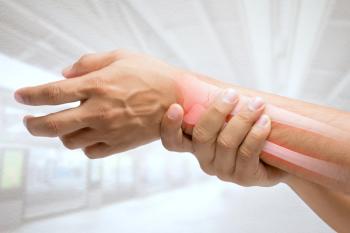
WHO reference standard for osteoporosis in postmenopausal women
Bone mineral density (BMD) T-score classification significantly underestimated risk of major osteoporotic fracture in the Women's Health Initiative (WHI) study, according to a new study.
Bone mineral density (BMD) T-score classification significantly underestimated risk of major osteoporotic fracture in the
“Current osteoporosis diagnosis is operationally based solely on BMD,” said principal investigator
The
“Theoretically, individuals with a T score less than -2.5 are expected to have a higher risk of fracture,” Dr. Wu told Contemporary OB/GYN. “However, most individuals who sustain a fracture are above this arbitrary cutoff point. This incongruity poses a challenge to clinicians to identify patients who may benefit from osteoporosis treatment.”
Fracture is multifactorial and highly heritable. Ethnicity/race and genetic disposition have previously been demonstrated to be two important factors influencing incidence of osteoporotic fracture. Therefore, “understanding the ethnical/racial and genetic influences on T-score osteoporosis classification is critical to building race-specific and personalized reference in osteoporosis diagnosis,” Dr. Wu said.
Methods
The analysis of 2,417 postmenopausal women from the WHI study involved calculating the polygenic score (PGS) from 63 BMD-associated single nucleotide polymorphisms (SNPs) for each participant.
Findings
The discrepancy between the predicted and observed cumulative incidences of major osteoporotic fracture was high across all subgroups. The most significant underestimation by T score was observed in women who had low genetic disposition of osteoporosis, in which the predicted cumulative incidence of a major osteoporotic fracture was 3.83% versus an observed 8.8%.
A staggering underestimation was also observed in African American women: predicted/observed ratio (POR) = 0.52; 95% confidence interval (CI): 0.30 to 0.83. The predicted incidence of a major osteoporotic fracture was 1.42% in African American women versus an observed 2.73% in African American women, and was 11.55% among Caucasian women, as opposed to an observed 18.38% in Caucasian women.
Compared to Caucasian women, African American, African Indian and Hispanic women had a much lower hazard of a major osteoporotic fracture after T-score adjustment: 59%, 41%, and 55% lower, respectively.
Results from the multivariate Cox proportional models provided further evidence that the performance of the Tâscore method in predicting osteoporotic fracture risks varies by race.
Conclusions
“Because the participants in our analysis were postmenopausal women, the magnitude of underestimation observed surprised me,” Dr. Wu said. “But not unexpected was that T-score criteria performed worst in African American women because T-score criteria were originally proposed for postmenopausal Caucasian women only.”
On the other hand, the finding that the most significant underestimation by Tâscore was observed in women who had low PGS, followed by the medium PGS group and the high PGS group, when stratified by genetic risk groups, “was a surprising result, as we anticipated that women with a high genetic disposition to osteoporosis are more likely to be underestimated by the T-score classification,” Dr. Wu said.
Creating an individualized diagnostic standard for osteoporosis will effectively solve the critical problem of including individual variability in genetic and other characteristics, according to Dr. Wu. “An individualized approach will also provide a much more accurate prediction, therefore help effectively identify high-risk individuals from the general population in the clinical setting,” he said.
Disclosures:
Dr. Wu reports no relevant financial disclosures.
Newsletter
Get the latest clinical updates, case studies, and expert commentary in obstetric and gynecologic care. Sign up now to stay informed.










